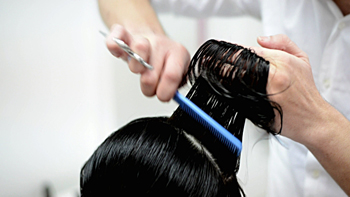Los Angeles, Jan 18: Scientists have found why human hair is incredibly strong and resistant to breaking, a finding that may lead to new generation of materials for body armours and even help create better hair care products.
 Hair has a strength to weight ratio comparable to steel. It can be stretched up to one and a half times its original length before breaking, researchers said.
Hair has a strength to weight ratio comparable to steel. It can be stretched up to one and a half times its original length before breaking, researchers said.
"We wanted to understand the mechanism behind this extraordinary property," said Yang Yu, a PhD student at the University of California San Diego.
"We're interested in understanding the correlation between the structure and the properties of biological materials to develop synthetic materials and designs - based on nature - that have better performance than existing ones," said Marc Meyers, a professor at UC San Diego.
Researchers examined at the nanoscale level how a strand of human hair behaves when it is deformed, or stretched. The team found that hair behaves differently depending on how fast or slow it is stretched. The faster hair is stretched, the stronger it is.
"Think of a highly viscous substance like honey. If you deform it fast it becomes stiff, but if you deform it slowly it readily pours," said Meyers.
Hair consists of two main parts - the cortex, which is made up of parallel fibrils, and the matrix, which has an amorphous (random) structure.
The matrix is sensitive to the speed at which hair is deformed, while the cortex is not. The combination of these two components, Yu explained, is what gives hair the ability to withstand high stress and strain.
As hair is stretched, its structure changes in a particular way. At the nanoscale, the cortex fibrils in hair are each made up of thousands of coiled spiral-shaped chains of molecules called alpha helix chains.
As hair is deformed, the alpha helix chains uncoil and become pleated sheet structures known as beta sheets. This structural change allows hair to handle up a large amount deformation without breaking.
This structural transformation is partially reversible. When hair is stretched under a small amount of strain, it can recover its original shape. Stretch it further, the structural transformation becomes irreversible.
"This is the first time evidence for this transformation has been discovered," Yu said.
"Hair is such a common material with many fascinating properties," said Bin Wang, a UC San Diego PhD alumna.
The team also conducted stretching tests on hair at different humidity levels and temperatures. At higher humidity levels, hair can withstand up to 70 to 80 per cent deformation before breaking. Water essentially "softens" hair - it enters the matrix and breaks the sulphur bonds connecting the filaments inside a strand of hair.
Researchers also found that hair starts to undergo permanent damage at 60 degrees Celsius. Beyond this temperature, hair breaks faster at lower stress and strain.





Comments
Add new comment